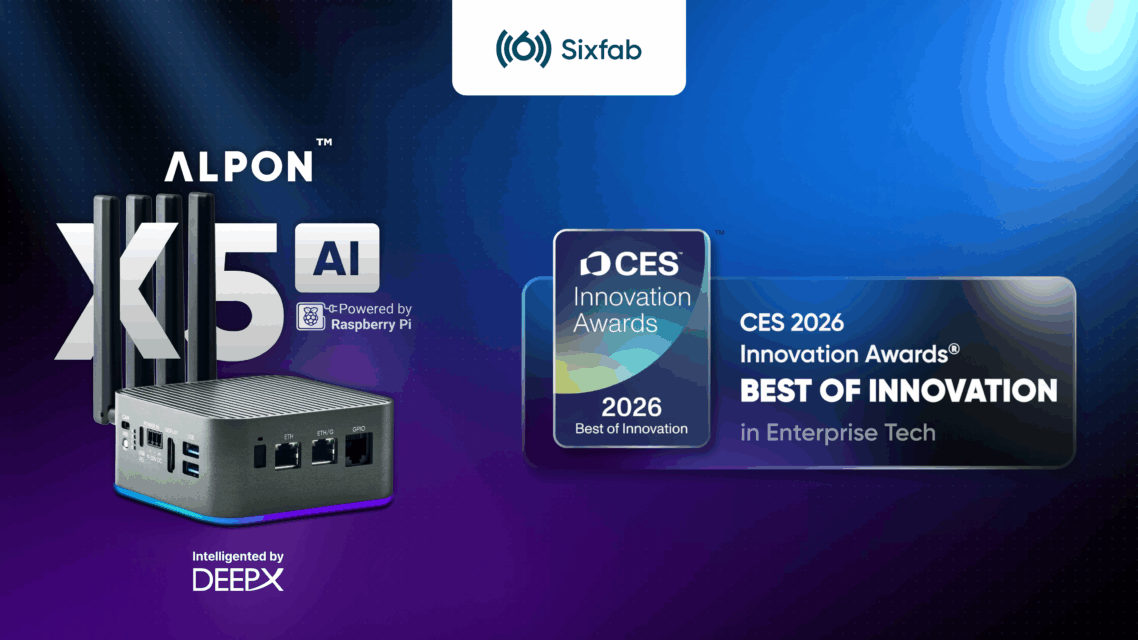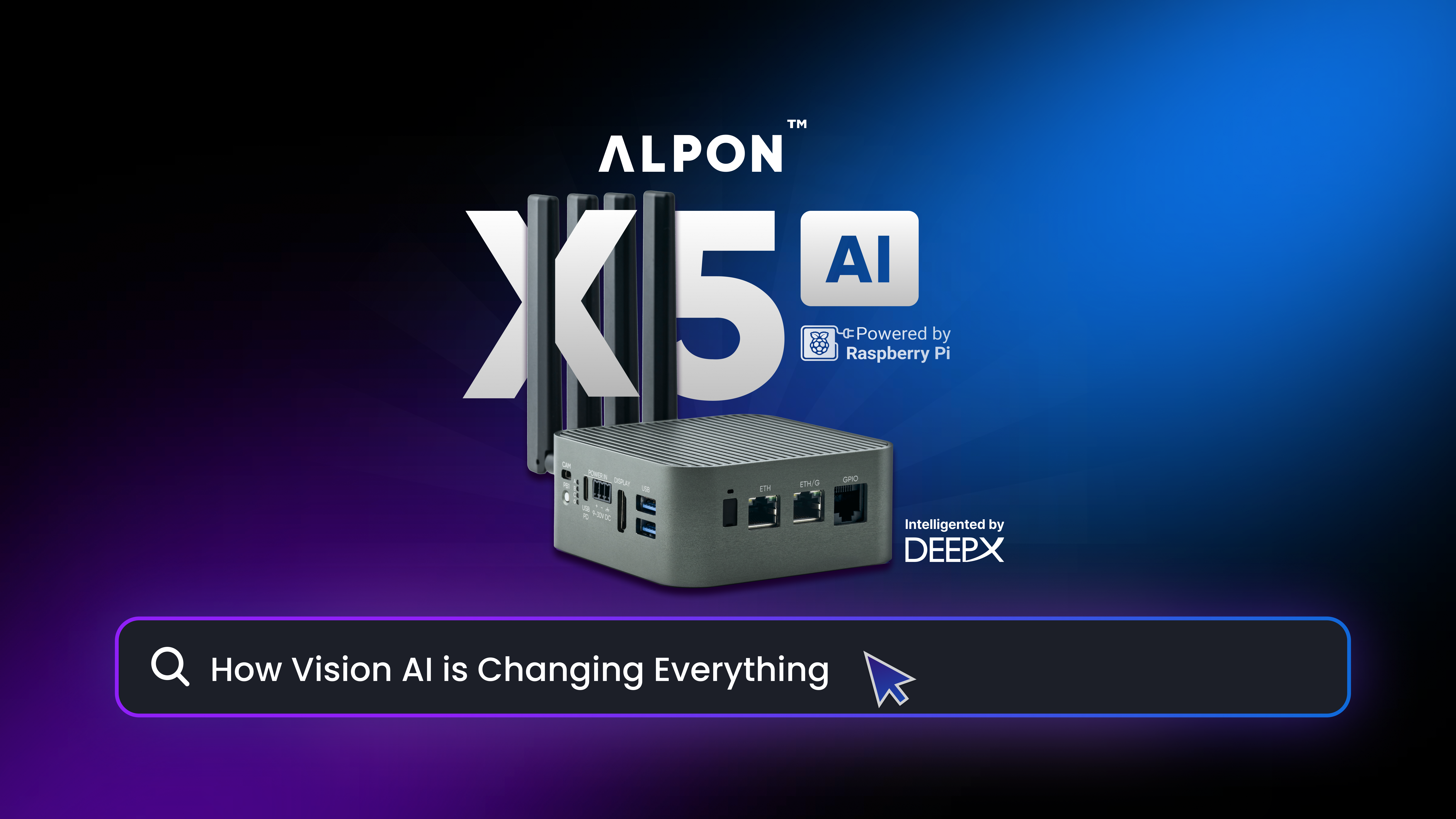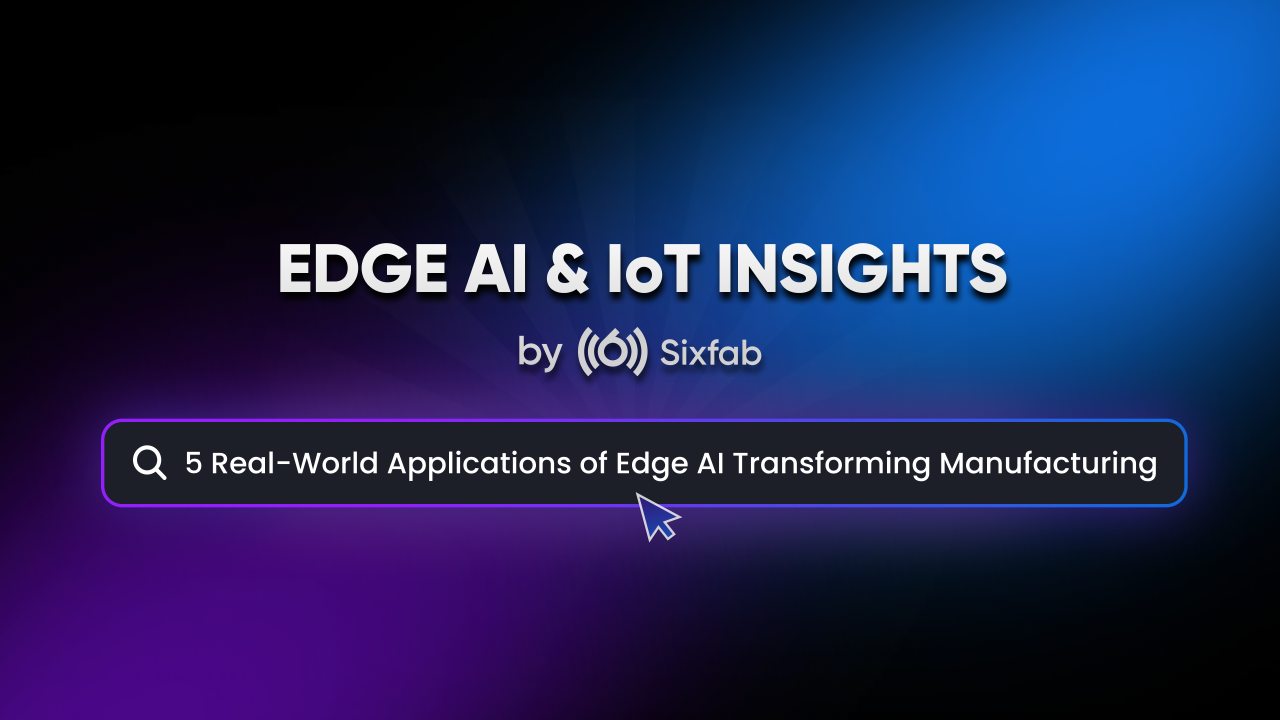Every breakthrough in technology begins with a new way of seeing. For decades, cameras have helped us observe, record, and analyze the world around us. They’ve been our second set of eyes, capturing what we might miss, helping us measure, document, and improve. But today, something remarkable is happening. Cameras are no longer passive tools for observation; they’re becoming intelligent systems that can understand what they see.
This transformation is powered by Vision AI — the ability for machines to process visual data in real time, recognize patterns, detect changes, and make sense of the physical world. What was once a stream of pixels is now information, context, and insight. Vision AI doesn’t just see; it interprets, predicts, and acts.
From Seeing to Understanding
Imagine a factory floor where every machine can sense what’s happening around it; not just through sensors or timers, but through sight. A robotic arm adjusts its movement the moment a part shifts out of place. A conveyor system identifies a damaged component and diverts it before it reaches the end of the line. An inspection camera verifies assembly quality in milliseconds, ensuring every product meets standard without slowing production. A vision-powered robot monitors heat levels on equipment and triggers maintenance before a failure occurs. And in automotive plants, Vision AI tracks precision welding, detects alignment errors, and keeps automated production lines moving smoothly. In addition to productivity gains, Vision AI enhances worker safety by detecting missing PPE, identifying hazardous behaviors, and monitoring risky zones such as under bridges, elevated walkways, and confined areas before incidents occur.
Now picture a city intersection. Traffic lights adapt dynamically to real-time conditions. Crosswalk cameras detect pedestrians and automatically prioritize safety. Cities rely on advanced surveillance and analytics to improve public safety, manage congestion, and create more efficient, resident-friendly urban environments. In logistics, Vision AI helps track packages, prevent bottlenecks, and spot anomalies long before they cause costly downtime. And in smart warehouses, forklifts navigate efficiently through narrow aisles, guided by vision-based systems that understand their surroundings instead of just reacting to them. In smart retail, shelves are monitored in real time, out-of-stock items are flagged instantly, customer flow is analyzed, and checkout areas stay secure and efficient.
In all these examples, thanks to Vision AI, the camera is no longer just an observer; it’s an active participant. It processes information instantly, right where the data is created.
That’s the promise of Vision AI: turning sight into action, from manufacturing lines to autonomous systems, making operations faster, safer, and smarter.
Why It Matters Now
So why is Vision AI becoming so important right now?
Part of the answer lies in how technology has evolved. Over the past decade, we’ve built massive computing power in the cloud. But the physical world doesn’t move at cloud speed; it moves in milliseconds. A safety system can’t wait for a server thousands of miles away to analyze an image. A high-speed production line can’t pause for a cloud decision on whether a part is defective. And in environments where every millisecond matters, bringing intelligence closer to where events happen isn’t just an optimization; it’s a necessity.
Real-time decisions require real-time processing.
That’s why the next generation of AI isn’t just happening in the cloud. It’s happening at the edge, where machines live and data is born.
Edge-based Vision AI eliminates the lag, the bandwidth cost, and the risk of downtime that come with remote computing. It brings intelligence closer to reality, where milliseconds matter most.
But Vision AI isn’t just about speed. It’s also about context. A camera on a factory floor doesn’t just see objects, it sees how people, tools, and machines move together. A Vision AI system learns what “normal” looks like, and immediately spots when something isn’t. That’s how predictive maintenance, worker safety, and efficiency all come together under one intelligent lens.
This is what we call Physical AI — artificial intelligence that operates in the real world, interacting with physical systems to make them smarter, safer, and more efficient.
Bringing Vision AI to Real World
Of course, turning this vision into reality takes more than algorithms. It requires robust, scalable, and reliable hardware designed for the environments where Vision AI will live.
Many AI systems fail not because the models aren’t accurate, but because they can’t survive outside the lab. Industrial floors are hot, dusty, and demanding. Vehicles vibrate. Infrastructure operates 24/7 with no room for error.
That’s why hardware matters as much as intelligence. Vision AI must run on systems that can handle continuous workloads, withstand harsh conditions, and remain secure and always connected, without relying on constant cloud access.
This is where companies like Sixfab are redefining what’s possible.
Award-Winning Innovation: ALPON X5 AI
Built on the trusted Raspberry Pi ecosystem and intelligented by DEEPX, ALPON X5 AI combines powerful on-device processing with industrial durability. It supports multiple camera interfaces optimized for modern Vision AI workloads, especially the fast-growing field of surveillance and real-time situational awareness. From queue analytics, trespass detection, footfall and heatmap tracking, crowd density monitoring, and violence detection to broader safety and operational insights, ALPON X5 AI makes high-accuracy video analytics easier to deploy at the edge. And with cloud-native management tools, developers can securely deploy, update, and scale their applications remotely with just a few clicks.
By uniting compute, connectivity, and control in one compact system, ALPON X5 AI turns Vision AI from a prototype into a product — from an experiment into something that runs every day, on real factory floors, in vehicles, kiosks, and connected infrastructure.
And the world is taking notice.
At CES 2026, ALPON X5 AI was named Winner of the Best of Innovation Award in Enterprise Tech, recognized for its engineering excellence and real-world impact. Among more than 3600 global submissions, it stood out as a platform that brings intelligence out of the cloud and into the physical world; exactly where it’s needed most.

The Future Looks Back
Vision AI isn’t science fiction anymore. It’s here, quietly shaping how we live and work from the cameras that guide automation lines to the systems that keep cities moving safely. And as these intelligent systems become more capable, privacy has become one of the strongest reasons to move AI from the cloud to the edge, keeping sensitive visual data local and protected.
With platforms like ALPON X5 AI, intelligence doesn’t just see the world. It understands it. It learns from it. And it acts within it.
Because the future of AI won’t just be about data.
It will be about sight.
It will be about action.
It will be about privacy.
It will be about the physical world — and everything we build within it. Learn more about ALPON X5 AI, the CES Innovation Awards 2026 Best of Innovation winner, and explore how Sixfab is making Physical AI real for the world.


